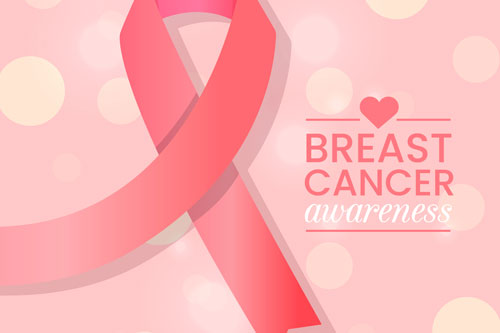What Does a Breast Lump Feel Like?

What Does a Breast Lump Feel Like?
Dr. Tulika Singh, Additional Professor, Radiodiagnosis & Imaging,
PGIMER, Chandigarh
 Many women relate with the anxiety of suddenly feeling a breast lump.
Many women relate with the anxiety of suddenly feeling a breast lump.
Although all breast-lumps are not cancerous, what matters most is the right action at the right time. Actually, you don’t even want to wait till you feel a breast lump.
The breast cancer, until it has grown quite big and dangerous, cannot be felt at all. When felt, the cancerous lump is usually hard, painless and immobile. However, some cancerous breast lumps may be soft, painful, tender, and anywhere in the breast[1]. Further, if you have dense breast tissue, like nearly half of all women above the age of 40 do[2], feeling a pretty big lump too could be more difficult.
Does self-breast-exam really help?
No. Self-breast exam does not help in early detection of breast cancer[3]. Breast cancer begins as one bad cell, which then divides into two bad cells, and so on. Only after about 30 such divisions, it can be felt by hand[4]. Each division takes one to two months with most breast cancers. So, by the time you can feel the lump or another symptom, the cancer has silently grown for two to five years[5], making treatment difficult and worsening the survival chances.
How to protect yourself?
As there is no prevention for the breast cancer, early detection with regular Mammography screening is the key to beat it. Mammography can detect the breast cancer as small as 3-5mm in size. Early detection dramatically improves the chances of complete cure, and disease-free survival- with 93% or higher survival rates in the first five years[6].
What is Mammography?
Mammography is a non-invasive, relatively inexpensive technique that takes high quality medical images of the breast tissue, using low-dose X-ray that is not harmful to you. Mammography helps Doctors to detect breast cancer at very early stage. Don’t forget that it’s a regular, yearly test. Not for only when there is a symptom. Reputed studies show a significant reduction in breast cancer deaths in those who underwent regular mammography[7].
Why Mammography?
An expert panel headed by University of California reviewed 18 different detection systems and concluded that mammography remains the gold standard[8] for early detection. Many Indian and world authorities such as Center for Disease Control (CDC) USA recommend Mammography[9] for regular screening.
What action can you take today?
If you are eligible for regular breast screening either by age (40 years and above), or due to high-risk factors such as family history (in which case before 40 years), ask your doctor about an annual Mammography plan – a simple ritual that can save your life!

Dr. Tulika Singh,
Additional Professor, Radiodiagnosis & Imaging, PGIMER, Chandigarh
- https://www.healthline.com/health/what-does-breast-cancer-feel-like#what-does-it-feel-like
- https://www.cancer.gov/types/breast/breast-changes/dense-breasts
- https://www.cancer.org/cancer/breast-cancer/screening-tests-and-early-detection/american-cancer-society-recommendations-for-the-early-detection-of-breast-cancer.html
- https://oregon.providence.org/forms-and-information/a/ask-an-expert-breast-cancer-growth-rate/
- https://oregon.providence.org/forms-and-information/a/ask-an-expert-breast-cancer-growth-rate/
- https://www.carolmilgardbreastcenter.org/early-detection
- Elmore, J. G., Armstrong, K., Lehman, C. D., & Fletcher, S. W. (2005). Screening for breast cancer. JAMA, 293 (10), 1245–1256. https://doi.org/10.1001/jama.293.10.1245
- https://www.webmd.com/breast-cancer/features/mammography-still-gold-standard-for-breast-cancer
- https://www.cdc.gov/cancer/breast/basic_info/screening.htm
